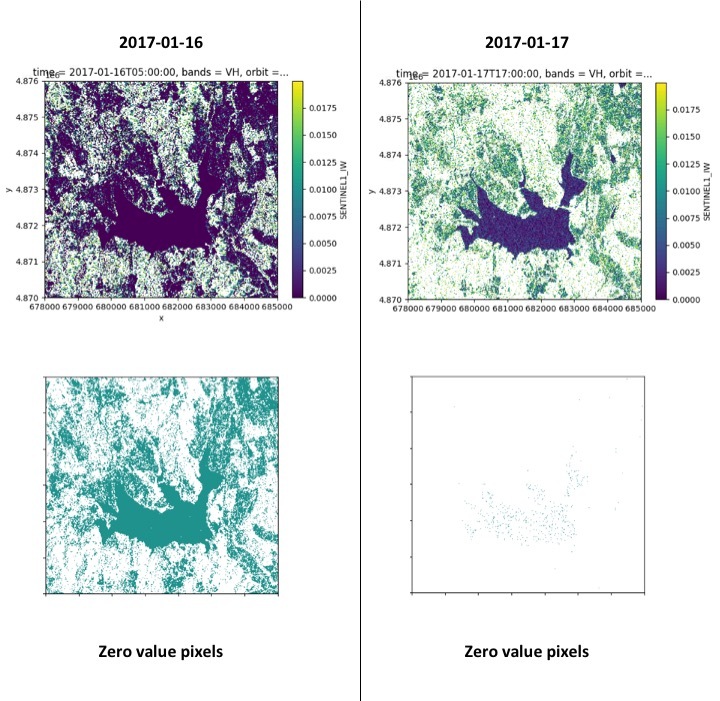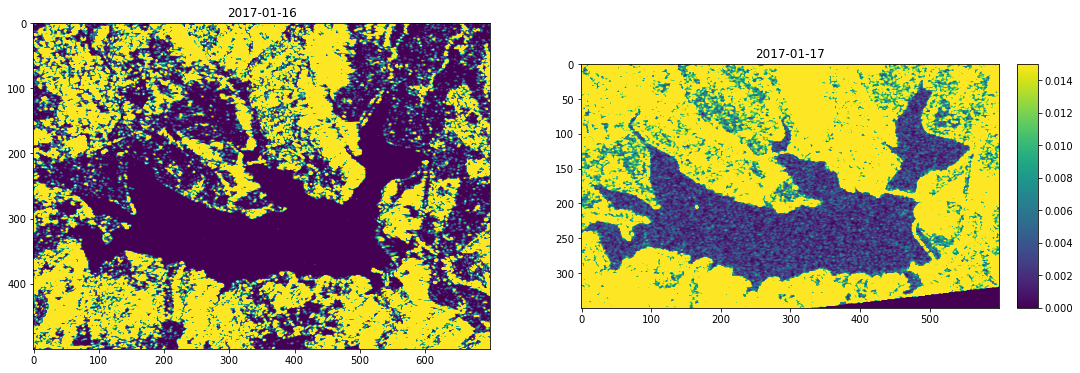Hi there,
I have downloaded some Sentinel-1 images using the sentinelhub python package.
Downloading SENTINEL1_IW products I noticed that sometimes the value in the VV or VH band are zero (if no speckleFilter is used) ore nan (if a speckleFilter is used). Conversely, if I download the same image from creodias this issue is not present. Do you know if during download from Sentinel Hub there is a filter dropping the values of data to zero if this is below a fixed noise floor?
Thanks in advance for your help.
These are the options used for the download:
product:
type: SENTINEL1_IW
other_args:
processing:
backCoeff: GAMMA0_TERRAIN
orthorectify: True
demInstance: COPERNICUS
speckleFilter:
type: LEE
windowSizeX: 3
windowSizeY: 3
This is the evalscript:
function setup() {
return {
input: [{
bands: [
"VV",
"VH",
"localIncidenceAngle",
"scatteringArea",
"shadowMask",
"dataMask"
]
}],
output: {
bands: 6,
sampleType: SampleType.FLOAT32
},
}
}
function evaluatePixel(sample) {
return [sample.VV, sample.VH, sample.localIncidenceAngle, sample.scatteringArea, sample.shadowMask,
sample.dataMask];
}



